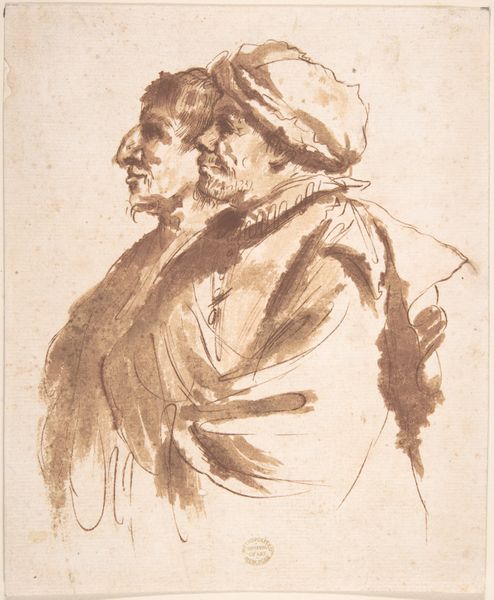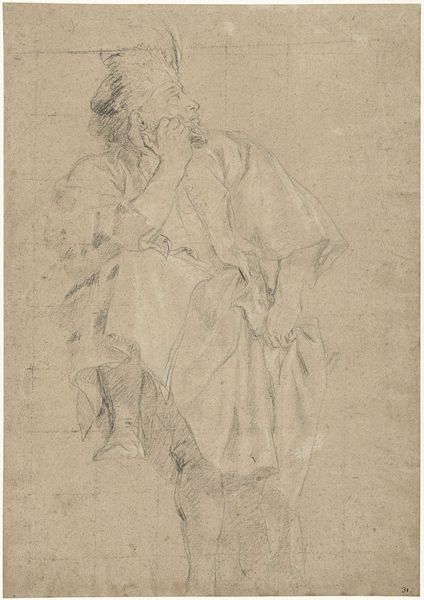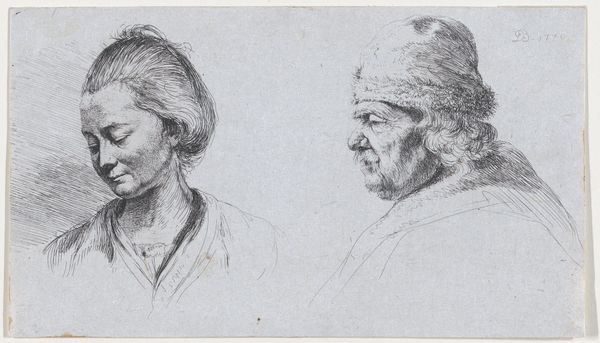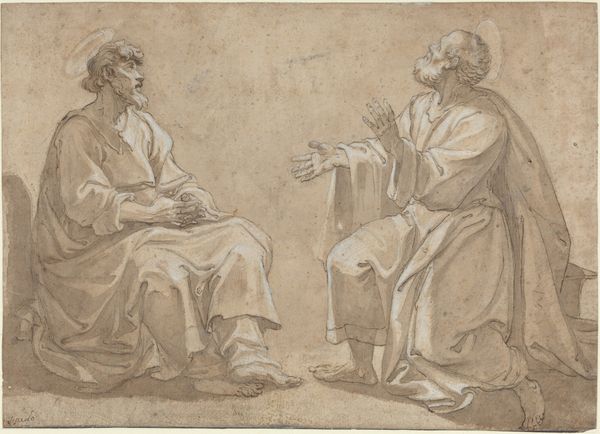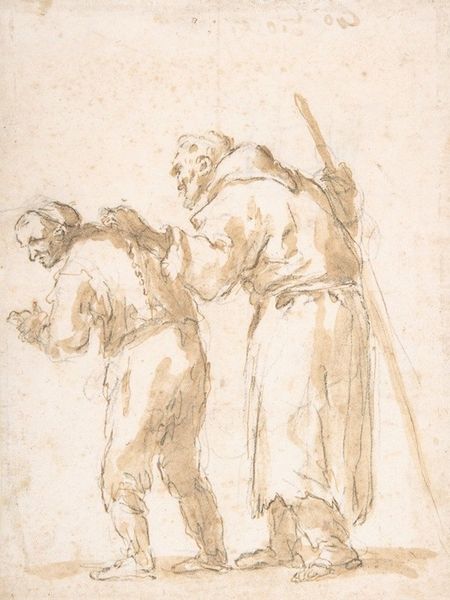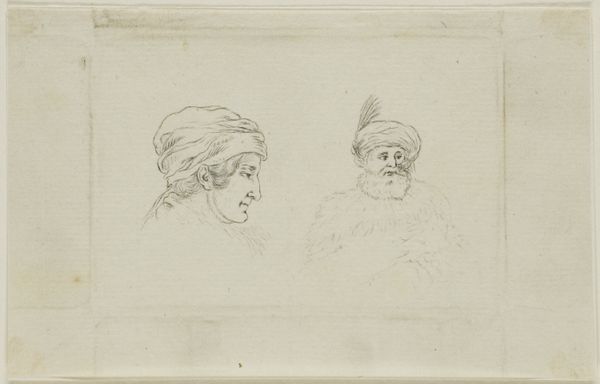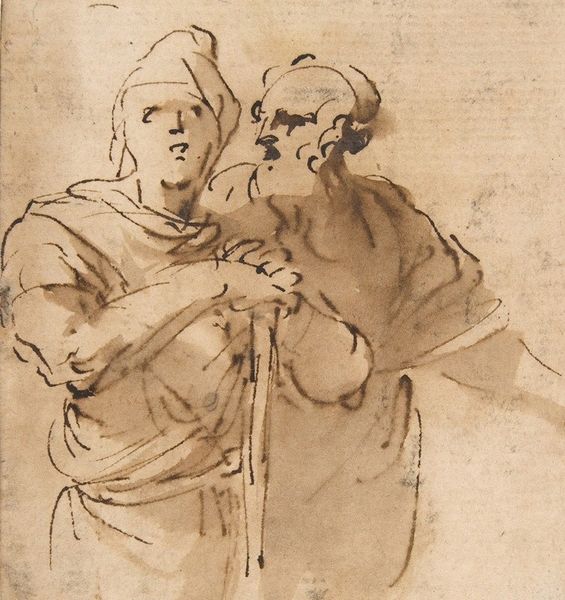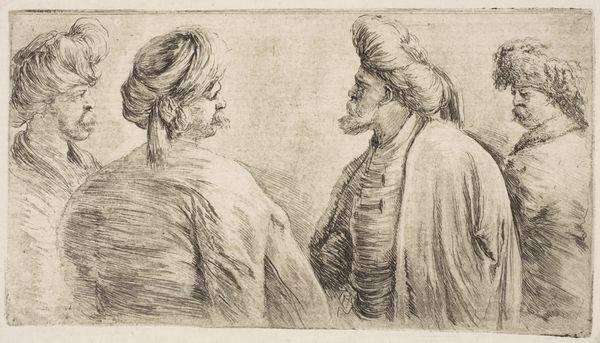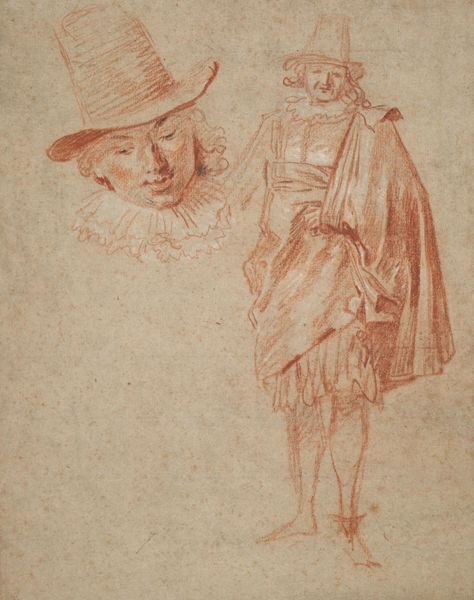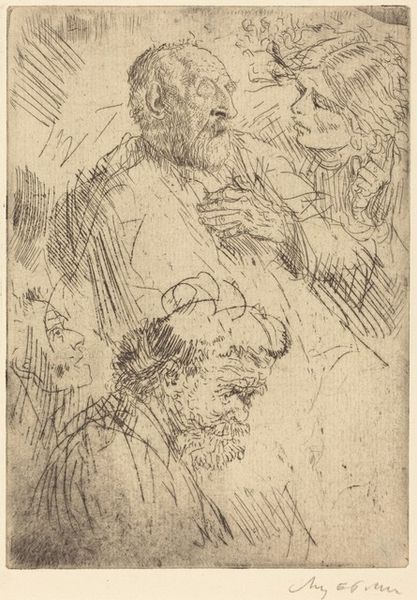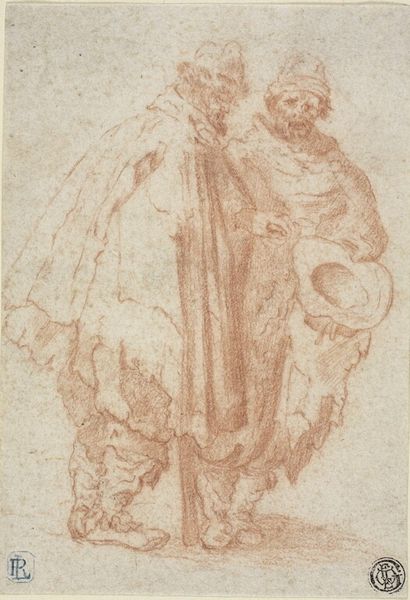
drawing, pen
#
portrait
#
drawing
#
toned paper
#
facial expression drawing
#
light pencil work
#
caricature
#
pencil sketch
#
charcoal drawing
#
mannerism
#
figuration
#
portrait reference
#
pencil drawing
#
pen
#
portrait drawing
#
facial study
#
portrait art
Copyright: Public Domain: Artvee
Editor: This is Guercino’s "Caricature of Two Men Seen in Profile," a pen and ink drawing from around 1635. It's quite funny, almost grotesque! I am fascinated by the exaggeration of their features. How would you interpret the social commentary embedded in this work? Curator: That's a perceptive initial reading. The "grotesque" aesthetic was part of a larger cultural discourse. Caricature arose in the 16th century as a playful, yet pointed, means of social critique. Think about the patronage system then. Could these caricatures have been subtly poking fun at the aristocracy, or perhaps serving a didactic purpose within elite circles? Editor: So, these weren't necessarily made for public consumption? More like private jokes, almost? Curator: Exactly. These images often circulated within a closed network. Now, notice the artist's handling of line. The very *act* of exaggerating physical features carries a potent symbolic charge. The clothing and hairstyles also point to certain social standings that, at the time, might be up for some cultural questioning, if done in a discreet context. Who do you think would commission something like this, and what message might they want to send? Editor: Maybe someone from the rising merchant class wanting to mock the out-of-touch nobility? It's fascinating to think about art as this subtle form of social jostling. Curator: Precisely! The visual language of caricature becomes a tool to negotiate social power, reflecting a time where traditional hierarchies were beginning to be questioned. It's a window into the period's anxieties and aspirations. Editor: I see this artwork so differently now; not just as a funny drawing, but as a statement reflecting the social dynamics of 17th-century Italy! Thanks for highlighting that. Curator: My pleasure. Remember, art doesn’t exist in a vacuum. It’s always in dialogue with its context.
Comments
No comments
Be the first to comment and join the conversation on the ultimate creative platform.
